Takashi Tsuda // Hygrometer CD
The five songs contained here are reconstructed from what was announced as a sound installation "Hygrometer" at STARNET RECODE in the summer of 5, and are a collage of the sound landscape recorded in the field by Mashiko.Therefore, the CD "Hygrometer" is not a recorded sound source that records the sound source of the installation as it is.
For me, sound installations and CDs have completely different work vectors.
This is because I think that sound installations can draw multi-layered time as multi-layered, while CDs express multi-layered time as one flow.
In May 2007, I stayed in Mashiko for a meeting and field recording for a few days, and at the stage of starting the production of the installation sound source, I heard that it would be nice to have a new CD to be sold at the time of the exhibition. At that time, I refused once for the above reason.
The exhibition of the installation ended in the end of July, and I had put it on hold in August and September, but in October I started to voluntarily put it together as a CD sound source. It wasn't until December that I visited Mashiko once in November to reconfirm the image and saw the completion of the demo version.
The CD consisted of five songs, "Morning water," "At the ridge," "Hygrometer," "Ao," and "Night water," along with five scenes: early morning, morning, daytime, evening, and night. ..
The work was done little by little every day according to the time of each scene.Naturally, the sound is heard differently in the early morning and late at night, and the mental image that the sound brings is also different.
Sound is a phenomenon in which air vibration and consciousness permeate each other, and from the idea that sound work is an attempt to observe and establish the mode of mutual permeation, such a work process is also necessary, and this is also It was also a fun experience to make various discoveries about "sound / hearing".
XNUMX. Morning water
In the early morning in the forest near STARNET, the songs of summer birds are recorded on the path of the valley where spring water drips.
The water droplets that collect through the humus moisten the valley and become a drinking fountain for birds.
Based on the sound source used in the installation, processing such as playback speed modulation and reverse modulation was applied and collaged with the above soundscape.
XNUMX, at the ridge
I was guided by Mr. Hideki Takayama, a woodworker, and made a field recording near Mr. Takayama's atelier.The fresh paddy fields, which have just been filled with brand new water, slowly warm up in the sunlight and the frogs begin to cry.
First, I composed the soundscape, and based on the sound source used for the installation, I played it with a multi-effects unit for guitar and layered it as a drone.
XNUMX, hygrometer
The sounds heard on the piano, Suikinkutsu, and the voices of birds and insects are all electronically modulated sounds of water droplets.
In the installation, the sound was randomly emitted from 14 speakers installed on the beam of the newly completed STARNET RECODE. Insects and birds are singing outside RECODE, and the scenery of the sound continues to Mt. Takadate.
The 7 types of sound sources used in this installation were used as they were to compose and mix.However, I had doubts about the perspective sound arrangement, so I did a lot of experimentation on sound localization.Using max / MSP, a software for digital sound processes, loose modulation and random panning are applied, and only one channel is sent to the reverb and delay of the multi-effects unit for guitar, and the volume, localization, and effect are applied. I made a system that changes randomly.The real-time operation of this system was returned to the hard disk for recording.So when I was mixing, I was improvising the system parameters and effector foot pedals on my laptop.
XNUMX, blue
A stereo microphone was set up in the center of STARNET ZONE, which was approaching dusk, and while walking barefoot around it, I improvised with a glass bottle filled with water and shells of snails.The sound source was electronically modulated in temperament and layered at the mixing stage.The characteristic of temperament is in the foreground, and I think it's a song with a unique and mysterious atmosphere in the album.
The sun goes down and the blue silence fills the area.
XNUMX, night water
When the sun goes down, STARNET hears a chorus of frogs from the fields.
The night is deep, the time is full, and the sound is soothing and sweet.
Similar to "Morning Water", the playback speed is modulated based on the sound source used in the installation, and collaged with the above soundscape.
The three songs, "Morning Water," "Hygrometer," and "Night Water," are, to put it bluntly, similar to the sound image in an installation.
I visited STARNET again in mid-December, asked Mr. Baba to listen to the demo, and the release was decided on the spot, but after that, I adjusted the mix balance and the overall scale while interacting with the director Mr. Isobe. did.At this stage, there were some parts that could not be adjusted due to the above complicated (or too simple) work process, but as a result, I think that the original image and concept became a sound source that came to the fore. ..This final adjustment work was done from the latter half of December to the beginning of the year.
Mastering is done by Mr. Hiromitsu Shoji, a plate disc.In the presence of director Isobe-san and myself, it was held for a whole day in mid-January at a plate disc studio somewhere in Tokyo.I always take off my hat for Shoji-san's work.I would like to express my sincere gratitude.
Last but not least, when the CD was released, Mr. Yoshihiro Kawasaki, a sound artist who was a pioneer of field recording who has been active in the SOUNDBUM project in recent years as a producer of the sanitary broadcasting station "ST.GIGA". I received a lot of comments.I sincerely thank you.
(Takashi Tsuda)
The five songs contained here are reconstructed from what was announced as a sound installation "Hygrometer" at STARNET RECODE in the summer of 5, and are a collage of the sound landscape recorded in the field by Mashiko.Therefore, the CD "Hygrometer" is not a recorded sound source that records the sound source of the installation as it is.
For me, sound installations and CDs have completely different work vectors.
This is because I think that sound installations can draw multi-layered time as multi-layered, while CDs express multi-layered time as one flow.
In May 2007, I stayed in Mashiko for a meeting and field recording for a few days, and at the stage of starting the production of the installation sound source, I heard that it would be nice to have a new CD to be sold at the time of the exhibition. At that time, I refused once for the above reason.
The exhibition of the installation ended in the end of July, and I had put it on hold in August and September, but in October I started to voluntarily put it together as a CD sound source. It wasn't until December that I visited Mashiko once in November to reconfirm the image and saw the completion of the demo version.
The CD consisted of five songs, "Morning water," "At the ridge," "Hygrometer," "Ao," and "Night water," along with five scenes: early morning, morning, daytime, evening, and night. ..
The work was done little by little every day according to the time of each scene.Naturally, the sound is heard differently in the early morning and late at night, and the mental image that the sound brings is also different.
Sound is a phenomenon in which air vibration and consciousness permeate each other, and from the idea that sound work is an attempt to observe and establish the mode of mutual permeation, such a work process is also necessary, and this is also It was also a fun experience to make various discoveries about "sound / hearing".
XNUMX. Morning water
In the early morning in the forest near STARNET, the songs of summer birds are recorded on the path of the valley where spring water drips.
The water droplets that collect through the humus moisten the valley and become a drinking fountain for birds.
Based on the sound source used in the installation, processing such as playback speed modulation and reverse modulation was applied and collaged with the above soundscape.
XNUMX, at the ridge
I was guided by Mr. Hideki Takayama, a woodworker, and made a field recording near Mr. Takayama's atelier.The fresh paddy fields, which have just been filled with brand new water, slowly warm up in the sunlight and the frogs begin to cry.
First, I composed the soundscape, and based on the sound source used for the installation, I played it with a multi-effects unit for guitar and layered it as a drone.
XNUMX, hygrometer
The sounds heard on the piano, Suikinkutsu, and the voices of birds and insects are all electronically modulated sounds of water droplets.
In the installation, the sound was randomly emitted from 14 speakers installed on the beam of the newly completed STARNET RECODE. Insects and birds are singing outside RECODE, and the scenery of the sound continues to Mt. Takadate.
The 7 types of sound sources used in this installation were used as they were to compose and mix.However, I had doubts about the perspective sound arrangement, so I did a lot of experimentation on sound localization.Using max / MSP, a software for digital sound processes, loose modulation and random panning are applied, and only one channel is sent to the reverb and delay of the multi-effects unit for guitar, and the volume, localization, and effect are applied. I made a system that changes randomly.The real-time operation of this system was returned to the hard disk for recording.So when I was mixing, I was improvising the system parameters and effector foot pedals on my laptop.
XNUMX, blue
A stereo microphone was set up in the center of STARNET ZONE, which was approaching dusk, and while walking barefoot around it, I improvised with a glass bottle filled with water and shells of snails.The sound source was electronically modulated in temperament and layered at the mixing stage.The characteristic of temperament is in the foreground, and I think it's a song with a unique and mysterious atmosphere in the album.
The sun goes down and the blue silence fills the area.
XNUMX, night water
When the sun goes down, STARNET hears a chorus of frogs from the fields.
The night is deep, the time is full, and the sound is soothing and sweet.
Similar to "Morning Water", the playback speed is modulated based on the sound source used in the installation, and collaged with the above soundscape.
The three songs, "Morning Water," "Hygrometer," and "Night Water," are, to put it bluntly, similar to the sound image in an installation.
I visited STARNET again in mid-December, asked Mr. Baba to listen to the demo, and the release was decided on the spot, but after that, I adjusted the mix balance and the overall scale while interacting with the director Mr. Isobe. did.At this stage, there were some parts that could not be adjusted due to the above complicated (or too simple) work process, but as a result, I think that the original image and concept became a sound source that came to the fore. ..This final adjustment work was done from the latter half of December to the beginning of the year.
Mastering is done by Mr. Hiromitsu Shoji, a plate disc.In the presence of director Isobe-san and myself, it was held for a whole day in mid-January at a plate disc studio somewhere in Tokyo.I always take off my hat for Shoji-san's work.I would like to express my sincere gratitude.
Last but not least, when the CD was released, Mr. Yoshihiro Kawasaki, a sound artist who was a pioneer of field recording who has been active in the SOUNDBUM project in recent years as a producer of the sanitary broadcasting station "ST.GIGA". I received a lot of comments.I sincerely thank you.
(Takashi Tsuda)
Takashi Tsuda // Hygrometer CD
- Availability:
A work that has been out of print for a long time was reissued in 2014.
3rd reissue of his first album'Shitsudokei'.
CD "Hygrometer" production memoThe five songs contained here are reconstructed from what was announced as a sound installation "Hygrometer" at STARNET RECODE in the summer of 5, and are a collage of the sound landscape recorded in the field by Mashiko.Therefore, the CD "Hygrometer" is not a recorded sound source that records the sound source of the installation as it is.
For me, sound installations and CDs have completely different work vectors.
This is because I think that sound installations can draw multi-layered time as multi-layered, while CDs express multi-layered time as one flow.
In May 2007, I stayed in Mashiko for a meeting and field recording for a few days, and at the stage of starting the production of the installation sound source, I heard that it would be nice to have a new CD to be sold at the time of the exhibition. At that time, I refused once for the above reason.
The exhibition of the installation ended in the end of July, and I had put it on hold in August and September, but in October I started to voluntarily put it together as a CD sound source. It wasn't until December that I visited Mashiko once in November to reconfirm the image and saw the completion of the demo version.
The CD consisted of five songs, "Morning water," "At the ridge," "Hygrometer," "Ao," and "Night water," along with five scenes: early morning, morning, daytime, evening, and night. ..
The work was done little by little every day according to the time of each scene.Naturally, the sound is heard differently in the early morning and late at night, and the mental image that the sound brings is also different.
Sound is a phenomenon in which air vibration and consciousness permeate each other, and from the idea that sound work is an attempt to observe and establish the mode of mutual permeation, such a work process is also necessary, and this is also It was also a fun experience to make various discoveries about "sound / hearing".
XNUMX. Morning water
In the early morning in the forest near STARNET, the songs of summer birds are recorded on the path of the valley where spring water drips.
The water droplets that collect through the humus moisten the valley and become a drinking fountain for birds.
Based on the sound source used in the installation, processing such as playback speed modulation and reverse modulation was applied and collaged with the above soundscape.
XNUMX, at the ridge
I was guided by Mr. Hideki Takayama, a woodworker, and made a field recording near Mr. Takayama's atelier.The fresh paddy fields, which have just been filled with brand new water, slowly warm up in the sunlight and the frogs begin to cry.
First, I composed the soundscape, and based on the sound source used for the installation, I played it with a multi-effects unit for guitar and layered it as a drone.
XNUMX, hygrometer
The sounds heard on the piano, Suikinkutsu, and the voices of birds and insects are all electronically modulated sounds of water droplets.
In the installation, the sound was randomly emitted from 14 speakers installed on the beam of the newly completed STARNET RECODE. Insects and birds are singing outside RECODE, and the scenery of the sound continues to Mt. Takadate.
The 7 types of sound sources used in this installation were used as they were to compose and mix.However, I had doubts about the perspective sound arrangement, so I did a lot of experimentation on sound localization.Using max / MSP, a software for digital sound processes, loose modulation and random panning are applied, and only one channel is sent to the reverb and delay of the multi-effects unit for guitar, and the volume, localization, and effect are applied. I made a system that changes randomly.The real-time operation of this system was returned to the hard disk for recording.So when I was mixing, I was improvising the system parameters and effector foot pedals on my laptop.
XNUMX, blue
A stereo microphone was set up in the center of STARNET ZONE, which was approaching dusk, and while walking barefoot around it, I improvised with a glass bottle filled with water and shells of snails.The sound source was electronically modulated in temperament and layered at the mixing stage.The characteristic of temperament is in the foreground, and I think it's a song with a unique and mysterious atmosphere in the album.
The sun goes down and the blue silence fills the area.
XNUMX, night water
When the sun goes down, STARNET hears a chorus of frogs from the fields.
The night is deep, the time is full, and the sound is soothing and sweet.
Similar to "Morning Water", the playback speed is modulated based on the sound source used in the installation, and collaged with the above soundscape.
The three songs, "Morning Water," "Hygrometer," and "Night Water," are, to put it bluntly, similar to the sound image in an installation.
I visited STARNET again in mid-December, asked Mr. Baba to listen to the demo, and the release was decided on the spot, but after that, I adjusted the mix balance and the overall scale while interacting with the director Mr. Isobe. did.At this stage, there were some parts that could not be adjusted due to the above complicated (or too simple) work process, but as a result, I think that the original image and concept became a sound source that came to the fore. ..This final adjustment work was done from the latter half of December to the beginning of the year.
Mastering is done by Mr. Hiromitsu Shoji, a plate disc.In the presence of director Isobe-san and myself, it was held for a whole day in mid-January at a plate disc studio somewhere in Tokyo.I always take off my hat for Shoji-san's work.I would like to express my sincere gratitude.
Last but not least, when the CD was released, Mr. Yoshihiro Kawasaki, a sound artist who was a pioneer of field recording who has been active in the SOUNDBUM project in recent years as a producer of the sanitary broadcasting station "ST.GIGA". I received a lot of comments.I sincerely thank you.
(Takashi Tsuda)
A work that has been out of print for a long time was reissued in 2014.
3rd reissue of his first album'Shitsudokei'.
CD "Hygrometer" production memoThe five songs contained here are reconstructed from what was announced as a sound installation "Hygrometer" at STARNET RECODE in the summer of 5, and are a collage of the sound landscape recorded in the field by Mashiko.Therefore, the CD "Hygrometer" is not a recorded sound source that records the sound source of the installation as it is.
For me, sound installations and CDs have completely different work vectors.
This is because I think that sound installations can draw multi-layered time as multi-layered, while CDs express multi-layered time as one flow.
In May 2007, I stayed in Mashiko for a meeting and field recording for a few days, and at the stage of starting the production of the installation sound source, I heard that it would be nice to have a new CD to be sold at the time of the exhibition. At that time, I refused once for the above reason.
The exhibition of the installation ended in the end of July, and I had put it on hold in August and September, but in October I started to voluntarily put it together as a CD sound source. It wasn't until December that I visited Mashiko once in November to reconfirm the image and saw the completion of the demo version.
The CD consisted of five songs, "Morning water," "At the ridge," "Hygrometer," "Ao," and "Night water," along with five scenes: early morning, morning, daytime, evening, and night. ..
The work was done little by little every day according to the time of each scene.Naturally, the sound is heard differently in the early morning and late at night, and the mental image that the sound brings is also different.
Sound is a phenomenon in which air vibration and consciousness permeate each other, and from the idea that sound work is an attempt to observe and establish the mode of mutual permeation, such a work process is also necessary, and this is also It was also a fun experience to make various discoveries about "sound / hearing".
XNUMX. Morning water
In the early morning in the forest near STARNET, the songs of summer birds are recorded on the path of the valley where spring water drips.
The water droplets that collect through the humus moisten the valley and become a drinking fountain for birds.
Based on the sound source used in the installation, processing such as playback speed modulation and reverse modulation was applied and collaged with the above soundscape.
XNUMX, at the ridge
I was guided by Mr. Hideki Takayama, a woodworker, and made a field recording near Mr. Takayama's atelier.The fresh paddy fields, which have just been filled with brand new water, slowly warm up in the sunlight and the frogs begin to cry.
First, I composed the soundscape, and based on the sound source used for the installation, I played it with a multi-effects unit for guitar and layered it as a drone.
XNUMX, hygrometer
The sounds heard on the piano, Suikinkutsu, and the voices of birds and insects are all electronically modulated sounds of water droplets.
In the installation, the sound was randomly emitted from 14 speakers installed on the beam of the newly completed STARNET RECODE. Insects and birds are singing outside RECODE, and the scenery of the sound continues to Mt. Takadate.
The 7 types of sound sources used in this installation were used as they were to compose and mix.However, I had doubts about the perspective sound arrangement, so I did a lot of experimentation on sound localization.Using max / MSP, a software for digital sound processes, loose modulation and random panning are applied, and only one channel is sent to the reverb and delay of the multi-effects unit for guitar, and the volume, localization, and effect are applied. I made a system that changes randomly.The real-time operation of this system was returned to the hard disk for recording.So when I was mixing, I was improvising the system parameters and effector foot pedals on my laptop.
XNUMX, blue
A stereo microphone was set up in the center of STARNET ZONE, which was approaching dusk, and while walking barefoot around it, I improvised with a glass bottle filled with water and shells of snails.The sound source was electronically modulated in temperament and layered at the mixing stage.The characteristic of temperament is in the foreground, and I think it's a song with a unique and mysterious atmosphere in the album.
The sun goes down and the blue silence fills the area.
XNUMX, night water
When the sun goes down, STARNET hears a chorus of frogs from the fields.
The night is deep, the time is full, and the sound is soothing and sweet.
Similar to "Morning Water", the playback speed is modulated based on the sound source used in the installation, and collaged with the above soundscape.
The three songs, "Morning Water," "Hygrometer," and "Night Water," are, to put it bluntly, similar to the sound image in an installation.
I visited STARNET again in mid-December, asked Mr. Baba to listen to the demo, and the release was decided on the spot, but after that, I adjusted the mix balance and the overall scale while interacting with the director Mr. Isobe. did.At this stage, there were some parts that could not be adjusted due to the above complicated (or too simple) work process, but as a result, I think that the original image and concept became a sound source that came to the fore. ..This final adjustment work was done from the latter half of December to the beginning of the year.
Mastering is done by Mr. Hiromitsu Shoji, a plate disc.In the presence of director Isobe-san and myself, it was held for a whole day in mid-January at a plate disc studio somewhere in Tokyo.I always take off my hat for Shoji-san's work.I would like to express my sincere gratitude.
Last but not least, when the CD was released, Mr. Yoshihiro Kawasaki, a sound artist who was a pioneer of field recording who has been active in the SOUNDBUM project in recent years as a producer of the sanitary broadcasting station "ST.GIGA". I received a lot of comments.I sincerely thank you.
(Takashi Tsuda)
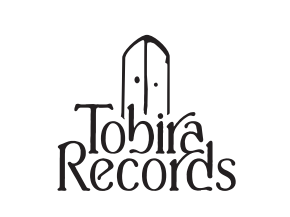
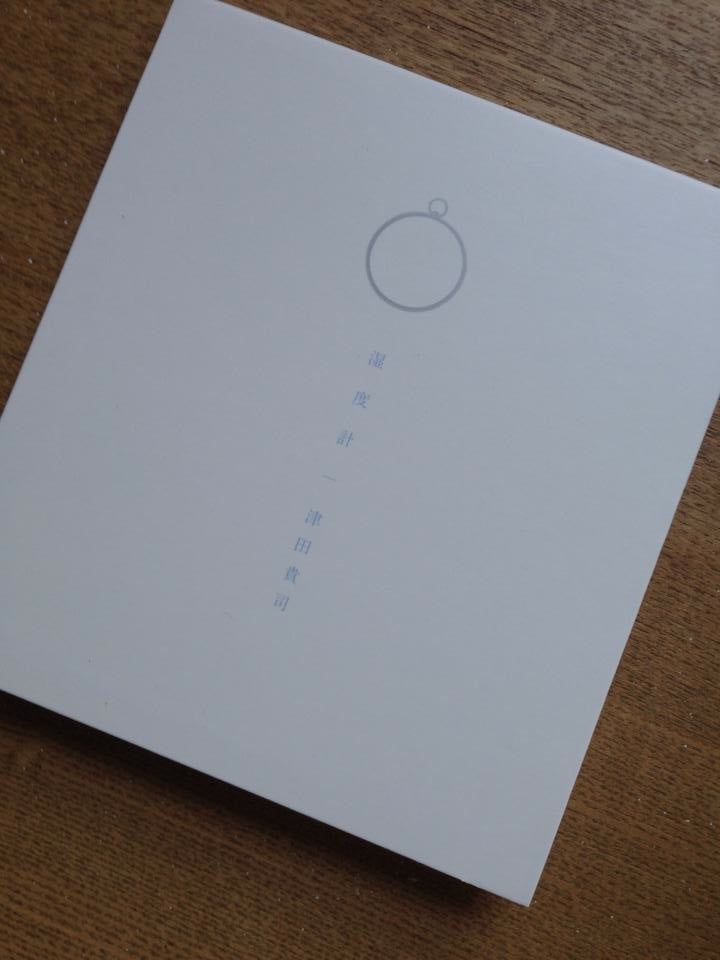
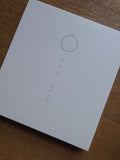
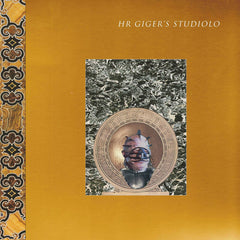
![Danny Clay // No More Darkness, No More Night LP [COLOR] / CD](https://tobirarecords.com/cdn/shop/files/a1861547972_16_medium.jpg?v=1713246114)
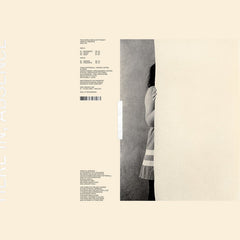
![Aiko Takahashi // It Could Have Been A Beautiful LP [COLOR] / CD](https://tobirarecords.com/cdn/shop/files/a1129639910_16_584ac81a-5a8d-47b5-9d0e-2eaaea0b9eef_medium.jpg?v=1713242480)